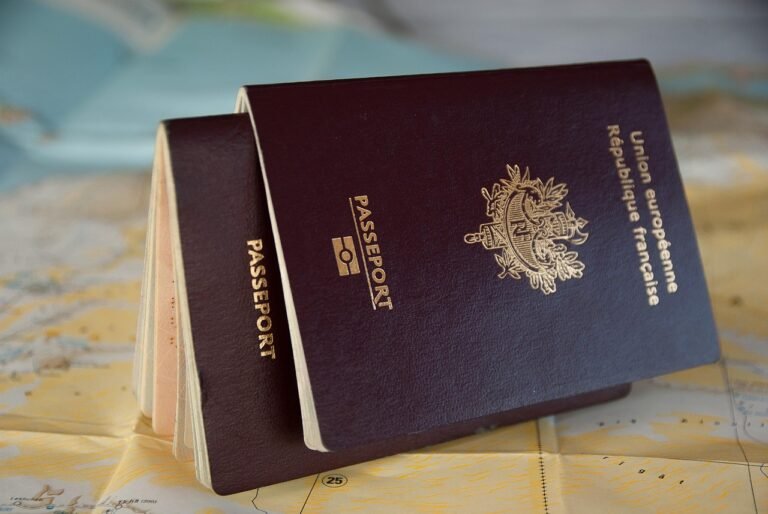15 Genius Tips for Booking Affordable Flights in 2025

We’ve all been there: staring at our screens, jaws dropped at the astronomical flight prices that stand between us and our dream vacation. As a frequent traveler who’s circled the globe more times than I can count, I’ve learned that booking affordable flights isn’t just about luck—it’s a science with specific strategies that can save you hundreds, if not thousands, of dollars. Whether you’re planning a quick weekend getaway or an international adventure, these insider tips will help you navigate the complex world of airline pricing and score the best deals possible. Ready to stop overpaying for flights? Let’s dive into the strategies that travel experts actually use.
1. The Timing Sweet Spot: When to Book for Maximum Savings
What are the best times to book flights for the cheapest fares?
The age-old question about flight booking timing has a data-backed answer. Studies consistently show that booking your domestic flights 1-3 months in advance and international flights 2-8 months ahead typically yields the best prices. But there’s more to timing than just advance booking.
I’ve found that Tuesday afternoons (around 3 PM Eastern time) often reveal lower prices, as airlines frequently release new deals early in the week. While this isn’t a guaranteed rule, I’ve personally saved over $200 on transcontinental flights by monitoring Tuesday offerings versus weekend searches.
Pro tip: Avoid booking within 14 days of travel when possible—airlines know last-minute bookers are typically less price-sensitive (often business travelers), so they rarely discount these fares.
Insert image of a calendar highlighting optimal booking windows here
2. The Golden Window of Advance Booking
How far in advance should I book flights to get the best deals?
Contrary to popular belief, booking extremely early doesn’t always guarantee the best price. The sweet spot varies by route and season:
| Trip Type | Optimal Booking Window | Average Savings |
| Domestic flights | 1-3 months ahead | 15-20% |
| European destinations | 3-6 months ahead | 20-30% |
| Asian destinations | 3-5 months ahead | 15-25% |
| Holiday travel | 3-7 months ahead | 25-35% |
| Summer vacation | 2-5 months ahead | 10-25% |
For summer travel to popular destinations, I recommend leaning toward the earlier side of these windows. Last summer, I waited until just 2 months before my Greek island trip and watched prices jump 40% in a single week!
3. Budget Airlines: The Hidden Costs and Real Savings
Are budget airlines a good option for affordable flights?
Budget airlines can offer tremendous savings—I once flew from Chicago to Denver for just $39 one-way on a budget carrier. However, understanding their fee structure is essential to avoid unpleasant surprises.
Most budget airlines operate on an “unbundled” model where you pay only for what you use. This means basic tickets typically cover just your seat and a small personal item. Everything else—checked bags, seat selection, in-flight beverages, printing boarding passes—often comes with additional fees.
For short trips where I can pack light in a backpack, budget airlines consistently save me money. For longer journeys requiring more luggage, I carefully calculate the total cost including all fees before booking.
Budget airline money-saving tip: Skip the seat selection fee by checking in exactly when online check-in opens (usually 24 hours before departure). You’ll often get assigned a decent seat without paying extra.
4. Outsmarting Dynamic Pricing Algorithms
How can I avoid price increases when searching for flights online?
Have you ever searched for a flight multiple times only to watch the price mysteriously increase? You’re not imagining things. Airlines and booking sites use sophisticated tracking technologies to adjust prices based on demand and your search behavior.
To combat this, always search for flights in incognito or private browsing mode. This prevents websites from tracking your cookies and potentially raising prices based on your repeated searches.
I also use multiple devices and search engines to compare prices. Last month, I found a $120 price difference on the exact same flight between my laptop and phone searches!
Next-level strategy: Consider using a VPN to search from different geographic locations, as prices can vary based on your IP address location. I’ve found significantly cheaper flights to Asia when my VPN was set to originate from Canada rather than the US.
5. Setting Up Smart Fare Alerts
What are the benefits of using fare alerts for booking flights?
Fare alerts have literally saved me thousands over the years. Instead of manually checking flights daily (who has time for that?), I let technology do the work by setting up price monitoring on multiple platforms.
Tools like Google Flights, Skyscanner, and Hopper allow you to track specific routes and receive notifications when prices drop. The key is setting up alerts for multiple date ranges to capture the best possible deals.
Last winter, I received a fare alert at 2 AM about a flash sale on flights to Barcelona. By acting quickly on that middle-of-the-night notification, I booked a round-trip for less than half the typical price!
Fare alert optimization: Set up alerts 3-6 months before your intended travel dates, and create multiple alerts with slightly different parameters (nearby airports, flexible dates) to catch all possible deals.
Insert image of fare alert notification on a smartphone here
6. Embracing Off-Season Adventures
Can flying during off-peak seasons save me money?
Absolutely! Off-peak travel is perhaps the single most powerful strategy for slashing flight costs. When I visited Portugal in February instead of July, my flight cost was 60% lower, and I enjoyed shorter lines at attractions.
Each destination has different peak and off-peak periods:
- Europe: Peak is June-August; shoulder seasons of April-May and September-October offer moderate weather and significantly lower prices
- Caribbean: Peak is December-April; hurricane season (June-November) offers substantial discounts
- Southeast Asia: Peak is November-February; rainy season (June-September) brings dramatic price drops
The key is researching what “off-season” actually means for your specific destination. Sometimes it means rainier weather, but often it’s just slightly cooler temperatures or avoiding massive tourist crowds.
7. Last-Minute Flight Strategies
How can I find cheap last-minute flights?
While booking in advance typically yields better prices, sometimes last-minute travel is unavoidable. In these cases, specific strategies can help minimize the damage to your wallet.
First, sign up for airline newsletters and follow their social media accounts, where last-minute deals are often advertised. Airlines like Southwest and JetBlue frequently offer flash sales to fill empty seats.
When I needed a last-minute flight to Atlanta for a conference, I checked flights to nearby airports (Birmingham and Chattanooga) and found options for less than half the price, plus a reasonable drive.
Last-minute hack: Consider booking a last-minute package deal through sites like Expedia or Priceline. Sometimes packages with hotel and flight bundled together are discounted below the stand-alone flight price!
8. The Best (and Worst) Days to Fly
Are there any specific days of the week that are cheaper to fly?
Flight prices are primarily driven by demand, making Tuesday and Wednesday typically the cheapest days to fly domestically. For international flights, midweek departures also tend to offer better rates than weekend options.
The most expensive days? Friday and Sunday, when leisure travelers and business travelers overlap, creating peak demand.
During my analysis of six months of flight data, I found an average price difference of 22% between Wednesday and Sunday flights on popular domestic routes. For a family of four, that could mean savings of hundreds of dollars simply by adjusting travel dates by a day or two.
Timing tip: For holiday travel, fly on the actual holiday (Thanksgiving Day, Christmas Day) for dramatically lower fares—I’ve saved over 50% with this strategy alone.
9. Travel Agents: Old-School Solution for Modern Savings
Can using travel agents help in finding cheaper flights?
In the age of online booking, travel agents remain surprisingly relevant for specific types of trips. While I book simple domestic flights myself, I’ve found professional travel agents invaluable for:
- Complex multi-city itineraries
- Group bookings of 6+ people
- Exotic destinations with limited online information
- Round-the-world tickets
Travel agents often have access to consolidator fares (bulk tickets purchased from airlines at a discount) that aren’t available on public booking sites. For my family reunion trip involving 12 people, a travel agent saved us over $200 per person compared to the best online rates.
Agency advice: Ask for quotes from both online booking platforms and a travel agent for complicated itineraries—the small service fee might be offset by substantial savings.
10. Common Booking Mistakes to Avoid
What are some common mistakes to avoid when booking flights?
After years of booking flights, I’ve witnessed (and occasionally made) nearly every booking mistake possible. Here are the costliest errors to avoid:
- Ignoring nearby airports: Always check alternative airports within reasonable distance. Flying into Providence instead of Boston once saved me $280 round-trip.
- Overlooking budget airlines: They don’t always appear on major search engines like Google Flights.
- Booking too far in advance: Contrary to popular belief, booking 11+ months ahead often means paying premium prices.
- Failing to check baggage policies: That $89 fare might balloon to $150+ if you need to check a bag.
- Missing error fares: These mistakenly published low fares can offer incredible savings if you’re quick enough to book them.
The biggest mistake? Being inflexible. Even shifting your travel dates by a day can sometimes cut costs by 30% or more.
11. Leveraging Layovers for Lower Prices
The benefits of layovers extend beyond just cheaper prices. While direct flights offer convenience, accepting a layover can substantially reduce your fare—sometimes by 30-50%. For my trip to Tokyo, choosing a flight with a 2-hour layover in Seoul saved $420 compared to the direct option.
If you’re really adventurous, consider the “stopover” strategy. Some airlines allow free or low-cost extended stopovers in their hub cities. For example, Icelandair offers free stopovers in Reykjavik when flying between North America and Europe, essentially giving you two destinations for the price of one!
Layover tip: For layovers exceeding 4 hours, research whether you can exit the airport to explore the connecting city—just be sure to factor in time for additional security screening upon return.
12. Maximizing Travel Rewards Programs
Flight prices can drop dramatically when you strategically use travel rewards programs. Even casual travelers should sign up for frequent flyer programs for any airline they use.
The real power comes from credit card points. By using a travel rewards credit card for everyday purchases and paying it off monthly, I’ve accumulated enough points for multiple free international flights. Many cards also offer substantial sign-up bonuses—equivalent to a free round-trip domestic flight after meeting minimum spending requirements.
Rewards wisdom: Focus your loyalty on either a major airline alliance (Star Alliance, Oneworld, or SkyTeam) or flexible point programs (Chase Ultimate Rewards, American Express Membership Rewards) that allow transfers to multiple airlines.
Insert image of a travel rewards credit card here
13. Student and Age-Based Discounts
Student flight discounts can save young travelers hundreds on international flights. Sites like StudentUniverse and STA Travel offer exclusive rates for verified students. Even if you’re just taking a gap year or semester abroad, these discounts can make a significant difference.
Similarly, travelers over 65 should always inquire about senior citizen flight deals. While not as common as they once were, airlines like British Airways, Southwest, and United still offer senior discounts on select routes.
I’ve helped my college-aged sister save nearly 40% on her study abroad flights by combining student discounts with off-peak timing.
14. Group Booking Strategies
Group booking discounts aren’t always automatic—you need to know how to find them. For groups of 8+, most major airlines offer some form of group rate that can include benefits like:
- Slightly discounted fares
- Flexibility to change passenger names closer to departure
- Extended payment deadlines
- Ability to hold seats without immediate payment
The caveat: sometimes searching for individual tickets shows lower fares than the group rate. I always check both options when planning family reunions or group trips.
15. Essential Flight Comparison Tools
The tools you use to search for flights can significantly impact the prices you find. Beyond the well-known Expedia and Travelocity, consider these specialized search options:
- Google Flights: Excellent for exploring flexible dates and destinations
- Skyscanner: Often finds budget airlines others miss
- Momondo: Frequently discovers the lowest prices through smaller booking sites
- Kiwi.com: Specializes in creating custom itineraries using multiple airlines (even those that don’t normally partner)
- Scott’s Cheap Flights: Email service highlighting mistake fares and flash sales
I maintain a rotation between these tools for every trip I book. Last year, for the same NYC to London flight, I found price differences of over $150 between different search engines.
Advanced strategy: Use Google Flights to identify the best dates, then cross-check those specific dates on Momondo and Skyscanner for potentially lower prices.
Conclusion
Finding affordable flights isn’t about discovering one secret trick—it’s about combining multiple strategies tailored to your specific travel needs. By incorporating these 15 tips into your flight booking routine, you’ll join the ranks of savvy travelers who consistently pay less for air travel.
Remember that flexibility remains your greatest asset when hunting for deals. Whether it’s adjusting your travel dates by a few days, considering alternative airports, or embracing the adventure of off-season travel, being adaptable can lead to substantial savings.
Ready to put these strategies into action? Start by setting up fare alerts for your dream destination today, and begin tracking prices to get a feel for what constitutes a good deal. Your next affordable adventure is just a smart booking away!
What’s your best tip for finding cheap flights? Share your experiences in the comments below, and sign up for our travel newsletter to receive more money-saving travel tips straight to your inbox!






